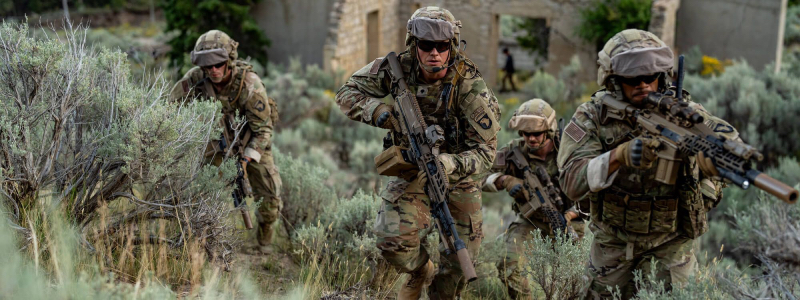The Evolution of Combat: U.S. Army Officially Type Classifies Next Generation Squad Weapons
Author: Aleksa M. | Publish Date: May 21, 2025 | Fact checked by: Marko Lalovic
M7 Rifle and M250 Automatic Rifle Receive Full "M" Designation
The U.S. Army has reached a significant milestone in its small arms modernization program with the official type classification of its Next Generation Squad Weapons. The XM7 rifle and XM250 automatic rifle have now been formally designated as the M7 and M250, respectively, marking their transition from developmental platforms to full-fledged service weapons.

According to the U.S. Army's Project Manager Soldier Lethality team, this classification represents "a major program milestone" in the weapons' development journey. These new firearms are set to replace longstanding service weapons within the Army's frontline units.
Leadership Perspective on the New Weapons Systems
Colonel Jason Bohannon, who heads the Project Manager Soldier Lethality initiative, emphasized the importance of this achievement:
"This milestone reflects our commitment to delivering cutting-edge capabilities that give our Soldiers the tactical advantage and lethality required on the battlefield," he stated. "We remain focused on equipping our force with the most reliable and effective tools to ensure mission success."
The Project Manager team further explained that "The Type Classification confirms the system meets the Army's stringent standards for operational performance, safety, and sustainment."
Replacement Program Details
Legacy Platforms Being Phased Out
The newly designated M7 rifle—which was previously known as the XM7 and briefly as the XM5—will replace the battle-proven M4 carbine that has served U.S. forces for decades. Meanwhile, the M250 automatic rifle will take over for the M249 squad automatic weapon.
These replacements will initially focus on the Army's Close Combat Force, which encompasses frontline fighting units such as the 101st Airborne Division. These elite units have already received early versions of the weapons and have played a critical role in their evaluation and refinement process, providing valuable feedback that will inform wider deployment.
Manufacturer's Perspective
SIG Sauer, the manufacturer of both weapons, provided additional context about the type classification process in their press release:
"The Type Classification affirms the M7 and M250 meet stringent performance, safety, and reliability standards for widespread military use. This designation ensures seamless integration into the U.S. Army's inventory, streamlining procurement, training, and maintenance across units and asserting the materiel fully satisfies U.S. Army operational needs. This milestone marks the transition of these advanced firearms from developmental to standardized status, signifying readiness for widespread fielding."
Steve Rose, Executive Vice President at Defense Strategies Group, highlighted the strategic significance of this development: "This approval underscores the U.S. Army's commitment to equipping our soldiers with next generation lethality to maintain tactical superiority and enhance mission success. The M7 and M250 represent a transformative leap in combat capability."
Addressing Recent Concerns
The type classification comes amid some scrutiny of the weapons systems, particularly the XM7 rifle. A recent monograph authored by a serving U.S. Army Captain raised concerns about certain material issues with the rifle and potential limitations related to the weapon systems' weight.
Despite these criticisms, the Army's decision to move forward with full type classification indicates confidence in the platforms' ability to meet operational requirements and provide significant advantages over their predecessors in combat scenarios.
Author:
Aleksa Miladinovic

Aleksa Miladinovic is a passionate technology enthusiast born and raised in Serbia, whose interest in defense technology was sparked by his country's rich firearms manufacturing heritage. His journey began when attending a Partner defense exhibition in Belgrade, where he was captivated by the innovative engineering and precision mechanics behind modern defense systems. With Serbia being a significant producer of military equipment in the region, Aleksa has developed a deep appreciation for the technical advancements and engineering excellence that the firearms industry represents.